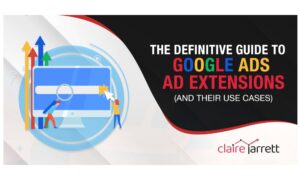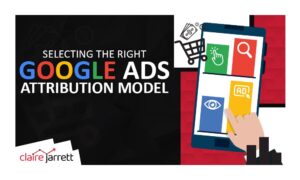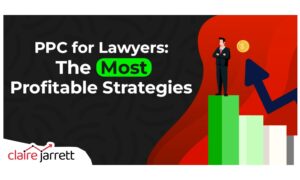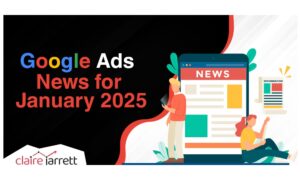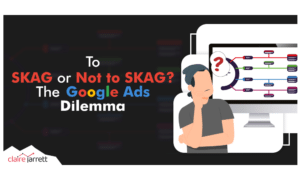What’s New in Google Ads in 2023?
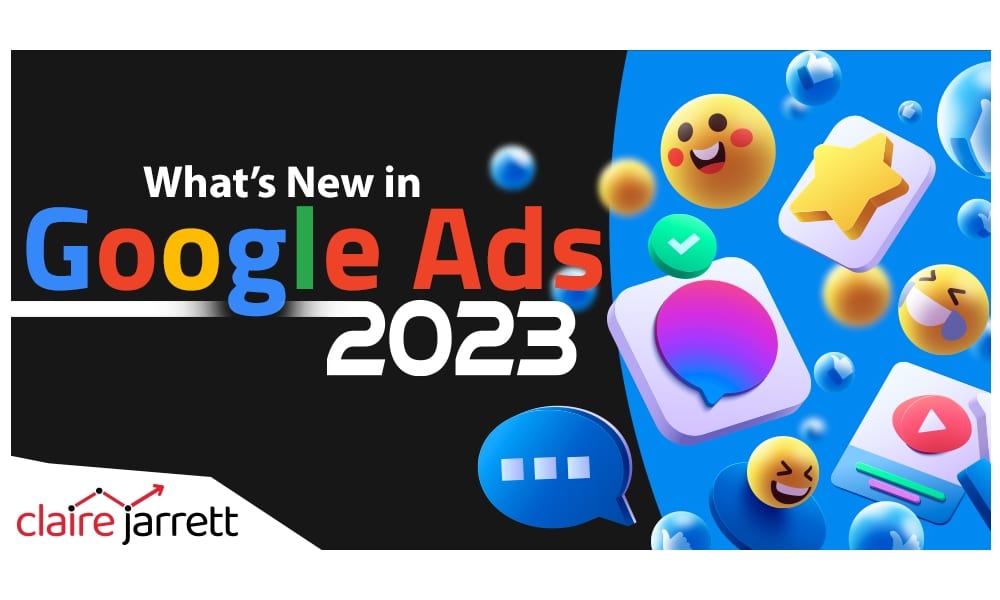
Last Updated on: 30th June 2025, 10:56 am
Google Ads has been in constant flux since it first launched in 2000. The 2022 updates to Google Ads made us invest more in first-party data and replace our ETAs with RSAs, but the new year is coming, and with it, plenty of changes! Today, I’ll walk you through the most critical Google Ads updates in 2023.
UPDATE: Here for 2024? Discover the most important Google Ads changes in 2024.
Here’s what you need to know!
Key Changes Coming to Google Ads in 2023:
- Fewer campaign controls and more AI as Google Ads removes video content targeting
- Vehicle listing ads are expanding in Google Ads in 2023!
- New Google Analytics audiences and metrics
- Third-party cookie sunsetting is postponed to 2024
- Say goodbye to Similar Audiences
- Performance Max expands to Smart Shopping and Local campaigns
- See which ads your competitors run from the SERP
- New Google Ads assets for verified advertisers to grab more SERP real estate
- Say hello to YouTube audio ads
- Add automated voiceovers to increase your YouTube ad engagement
- Three exciting local ad options: Auto-suggest, Similar places, and Navigational ads
1. Overarching Google Ads Trend for 2023: Fewer Campaign Controls, More AI
During 2022, Google Ads continued to invest heavily in machine learning. From smart bidding strategies and Smart Campaigns to merging Smart Shopping with Performance Max, get ready to have even less control over your campaigns – in exchange for Google’s audience insights.
As a Google Ads expert managing campaigns for clients since 2008, I’m not a fan of Google’s approach to automation. While it’d be nice to get extra time, AI can’t replace a professional just yet.
This, however, doesn’t mean you shouldn’t be excited. Google has significantly more data than any of us – leveraging it in a controlled environment is thrilling!
Which Google AdWords Updates Are Happening in 2023?
Google plans to remove key audience targeting features in 2023, including video content targeting.
This targeting option previously allowed your Google Ads for YouTube to target viewers based on specific content they watched.
As Google’s spokesperson explains, they’re getting rid of video content targeting because they found that “when removing keyword and topic targeting, advertisers saw performance benefits.”
It’s impossible to imagine that getting less campaign performance information and targeting options could lead to better results. Instead, your ad spend could be wasted on unqualified leads.
Similarly, look at broad match keyword targeting. We previously understood Google AdWords campaigns through keywords. These days, Google wants us to insert our data and let it do its magic.
As advertisers, we work around Google’s limitations to deliver high ROAS to clients. And while getting more data straight from the source is exciting, it pays to be careful.
What You Can Do to Prepare
While Google isn’t banning keywords (just yet), it’s increasingly shifting toward a black-box AI, so creating your first-party customer data strategy is crucial.
Similarly, if testing new, AI-driven campaign types like Performance Max is part of your Google Ads plan for the year, ensure the data you share with Google is high-quality and conducive to further testing.
When it comes to keyword match types, be careful and know what you’re getting into with each type.
For example, Google now uses its algorithm to find similar keyword variants when it can’t find exact match keywords. Keep a close eye on your ad account, even if you were extremely careful with keyword match types.
Finally, strengthen your negative keywords list. In the era of changing keyword match behaviours, a solid negative keywords list prevents your ad spend from being wasted on the wrong terms that Google’s AI wants to test.
2. Vehicle Listing Ads Expanding on Google Ads in 2023
If you own a car dealership, good news! Google Ads has started offering a new ad type specifically for vehicle sellers: vehicle listing ads.

You’ll need to sync your inventory with the Google Merchant Center and launch a campaign, similar to how things work with Google Shopping ads. Then, when searchers look for specific makes and models, Google will display your ads above the organic search engine results. Some of the details you’ll be able to display include:
- Year
- Mileage
- Make
- Model
- Colour
- Price
And more!
Vehicle ads are still in a limited beta, so get in touch with me or apply for access directly.
3. New Google Analytics Audiences and Metrics
At this point, two things are certain: Google Ads wants us to rely on its AI, and we can’t achieve anything without high-quality data.
If you’re like me, discontented to rely on someone else’s data without checking it against my own, you’ll want to keep an eye on the new additions to Google Analytics 4.
Which Google Ads Analytics Updates Are Coming in 2023?
GA4 is constantly expanding. Right now
, we’re all looking at a new suggested audience: 7-day unnotified users.
If an app user hasn’t been reached by a push notification in 7 days, you’ll find them in this audience segment.
Similarly, GA4 will now display the Views per Session and Average Session Duration metrics. This is extremely useful for making the complete switch to GA4 and understanding how your visitors and leads navigate your website.
Are you capturing their interest? These two metrics can tell you, even before your landing page starts affecting your Quality Score.
How to Prepare for the Updates
Log in to GA4 with your business objectives in mind. Google Analytics will give you plenty of data – make sure you have the context to extract the insights. There’s no substitute for customer research!
Similarly, verify the GA4’s suggested audiences against your own data.
While the audiences are defined based on your business category, they may not always be accurate. Set up your tracking framework and work towards cleaning up the data; even though it’s not binding right now, it may become a cornerstone of your Google Ads audience targeting in the future.
4. Third-Party Cookie Sunsetting Is Delayed
Google Ads plans to hold on to cookies, but not for long. Right now, the ETA for sunsetting the cookie tracking technology is scheduled for 2024.
How to Prepare for the Third-Party Cookie Deprecation
Leverage the third-party data while it’s still at your disposal by testing and storing insights.
Depending on the types of Google Ads you run, you may be able to extract more or less data. Consult your Google Ads management agency on the best practices that can put you in a better position as Google’s approach to privacy changes.
As a long-term strategy, continue investing in harnessing first-party data through your CRM or other (even offline) sources.
Google is offering new methods to model conversions (including enhanced conversions), so test them while there is still time to mitigate any potential campaign damage.
Most advertisers shouldn’t be affected, but if your ad budget is in the six-figure range, understand your risk and prepare accordingly.
Finally, your remarketing campaigns shouldn’t be affected by the sunsetting of third-party cookies, as Google Ads primarily uses first-party cookies.
5. Google Ads Will Sunset Similar Audiences in 2023
“Data” and “privacy” are our keywords for Google updates scheduled for 2023, and the news of Similar Audiences going away comes as a shock to no one.
Which Google AdWords Update Is Scheduled for 2023?
Starting from May 2023, advertisers will no longer be able to create new Similar Audience segments. You’ll still be able to use your existing ones, but only by August 2023, when Similar Audiences will be removed entirely.
How to Prepare for the End of Similar Audiences
Smart Bidding strategies will start incorporating elements of Similar Audiences, but, as with any AI-driven feature, it’ll be hard to evaluate success.
However, you can still use your first-party Customer Match lists to define campaign targeting. This is the safest way of maintaining control over your campaigns.
6. Performance Max Expands
Traditional Display and Smart Display campaigns merged in late 2022. Performance Max campaigns now aggregate Smart Shopping and Local campaigns.
The Google Ads platform as a whole is consolidating.
How to Prepare for the Performance Max Future
While Performance Max takes some liberties off the table (namely, the ability to choose placements), it’s an excellent option for expanding your Google Ads influence across different channels.
The key change to Performance Max in 2023 comes in the form of the Display/Smart Display campaign merge, which unlocks Google Ads optimised targeting.

Source: WordStream & LocalIQ
Google Ads will automatically enable optimised targeting for your new Smart Display campaigns. This means Google’s ad AI won’t only stick to your preferred audience segments but also venture beyond to find more profitable customers.
Now, more than ever, your data needs to be accurate. Decide if you’d like to automatically accept Google Ads’ recommendations and automation suggestions.
When experimenting, prepare performance benchmarks to understand if Google’s new campaign types drive the right business results.
7. Research Your Competitors’ Ads Directly in the Search Results
Another exciting change coming to Google Ads is the ability to see which ads your competitors are currently running, in addition to the ones targeting the keyword you’re searching for.
Simply click on the black triangle next to the URL in the ad, and select the option to “See more ads this advertiser has shown on Google.”
You’ll see other ads the same company has shown in the past 30 days, which can be incredibly useful for helping you find areas you haven’t covered yet.
Unfortunately, the display is still messy and not very easy to understand, so don’t get rid of your existing competitor research tools just yet.
Also, since you can see your competitors’ ads – they can see your Google Ads, too. Don’t get comfortable; stay competitive!
8. New Ad Assets for Verified Advertisers on Google Ads in 2023: Business Name and Logo
If you’re a verified advertiser on Google Ads, the platform will automatically pull your business name and logo into your ad if they’re displayed on your landing page. This is great for getting more SERP real estate, as well as dealing with competitors bidding on your brand names.
The option isn’t available for everyone just yet, but Google Ads is expanding support for it in 2023.
Make sure you check your “Assets” tab in the Google Ads Manager to verify which business names and logos the platform should show.
P.S. Don’t forget to review the updated Google Ads sizes!
9. Audio Ads Are Coming to YouTube in 2023
Google Ads is taking notes from Spotify, so you’ll be able to run audio ad campaigns on YouTube in 2023.
Currently, the only two channels available are YouTube and YouTube music, and you’ll still need to upload your video to YouTube before launching a campaign. Still, it’s an exciting development, especially if your audience often uses YouTube to listen to music or podcasts while doing something else.
A video ad isn’t going to be very effective without a voiceover – and an audio ad will work even better!
You can launch them from your Google Ads Manager by selecting “Video” as your campaign type and “Audio” as the campaign subtype.
Google Audio Ads for YouTube Metrics and Bidding
Currently, you can create audio ad campaigns with CPM bidding. You’ll be able to use advanced audiences and Brand Lift measurement.
On Display and Video 360, you’ll see the following metrics:
- Complete Listens
- Audio Media Cost eCPCL (Cost Per Completed Listens)
- Audio Revenue eCPCL
- Completion Rate (Audio)
- Companion Clicks (Audio)
- Companion Impressions (Audio)
And more!
10. Add Voiceovers to Your YouTube Ads
YouTube music and podcasts often play in the background these days. If your ad doesn’t feature a voiceover, you’re missing out.
Fortunately, Google Ads now offers the option to automatically generate voiceovers. You’ll find the option in the Asset Library.
From there, you’ll be able to choose from the 7 voice types and insert the text.
While voiceovers won’t be perfect for every YouTube campaign, try them out and see how they affect your clicks, views (listens), and other metrics that show whether someone’s engaged with your ad or letting it play in the background.
11. More Options for Local Ads
In addition to the Top 3 and map ads, you can now run Auto-suggest ads. When a searcher starts typing, you can showcase your business in the featured results:
Similarly, suppose someone in your target audience is using Google Maps for navigation. In that case, your place of business could be highlighted for them even if they hadn’t searched for it, thanks to Navigational ads.
You can even showcase your business as an alternative to a competitor. If a searcher is making a “near me” query and your business offers the same products/services as your competitor while being close by, it’ll pop up on the map with Similar Places ads:
All three are fantastic additions, so make sure you consult your ads expert on how to best use them!
The Future of Google Ads in 2023: Data, Data, and More Data
Ultimately, the future of Google Ads in 2023 and beyond is about data: more of it, and less of it, depending on your perspective. Also, watch for the advent of ChatGPT (here’s how to use it in Google Ads)
Google is introducing more of its AI to supplement your strategies, allowing you to reach out to new audience segments (even if you can’t exactly see them in your reporting).
On the other hand, as an advertiser, you should be prepared to gather more first-party data you can rely on to maximise your Google Ads success.
2023 is going to be an exciting year! Just make sure your Google Ads account is ready for it.
If you need personalised help, contact me. I’ve helped thousands of business owners maximise their Google Ads ROI since 2008.
Today, I’d love to help your business adapt to Google Ads changes!
But if you’re ready to make Google Ads work for your business with a simple and powerful campaign, get your copy of my best-selling book. I’ll guide you through everything you need to set up a campaign that converts in 7 rapid steps!








